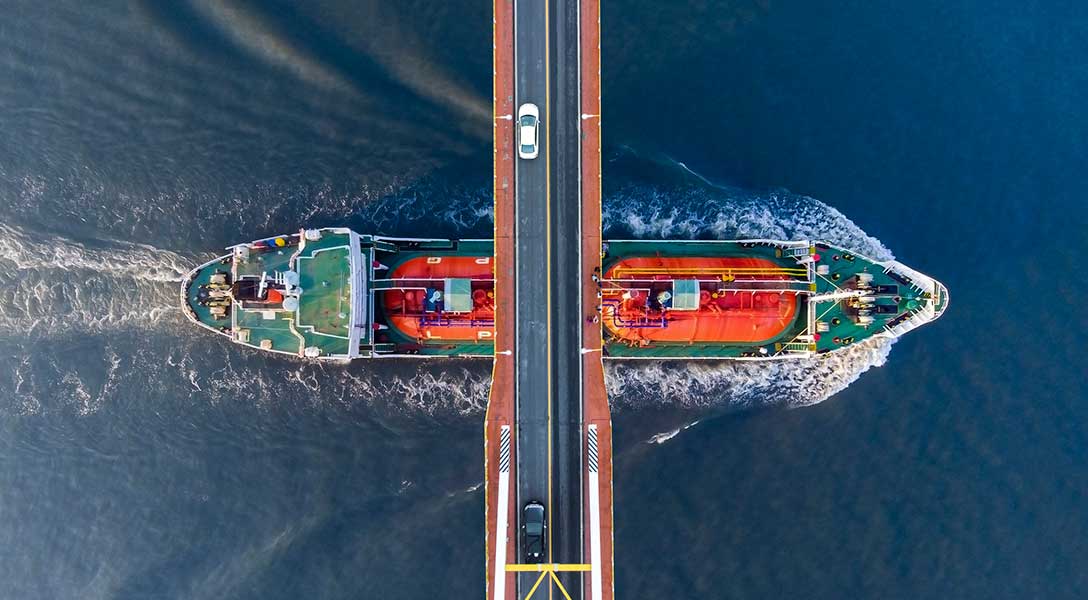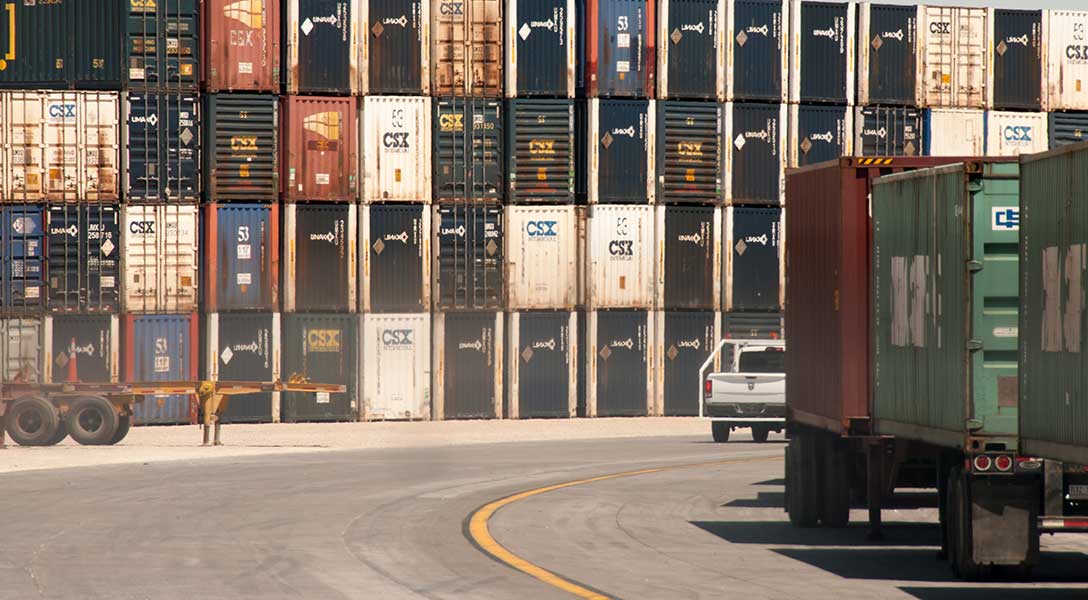
Are trade deficits good or bad, and can tariffs reduce them?
The persistent U.S. trade deficit has long prompted concern, highlighted by recent tariff increases and broader debate about globalization. Some proponents of tariffs argue they can shrink the deficit and bolster the economy. Two key questions subsequently arise: Are trade deficits inherently harmful? Can tariffs meaningfully reduce them?
Typically, trade deficits are viewed through a lens of exports and imports, with the latter exceeding the former. While that is a useful exercise, it’s also helpful to examine deficits through a macroeconomic lens. Drawing on that perspective, the difference between national savings and national investment closely approximates the trade deficit.
We subsequently show that trade deficits can reflect strong investment or fiscal expansion funded via access to global capital markets. Trade deficits facilitate higher investment than might otherwise occur or mitigate the costs to the private sector of fiscal expansion.
Thus, they do not necessarily represent weakness, but rather a means for the economy to respond to macroeconomic forces. While tariffs can influence trade flows, their net impact on overall trade balances is theoretically unclear and empirically limited at moderate tariff levels. Our analysis concludes by exploring the deeper structural forces behind the enduring U.S. trade deficit over the past half-century.
From saving-investment gaps to trade balances
To understand trade balances from a macroeconomic standpoint, it’s helpful to begin with national accounting identities that link domestic production, income and expenditures to international transactions, particularly trade. A central concept in this framework is national savings (S), defined as the sum of private (household and business) savings and government saving. National investment (I) represents the private and public spending that adds to the capital stock.
The standard national accounting identity connecting these variables states that the difference between national saving and national investment, adjusted for statistical discrepancies (SD), equals the current account balance (CA). The current account also includes the trade balance (exports (X) minus imports (M)) as well as net foreign income and transfers received from abroad (FIN). Taken together, the relationship can be stated as:
S – I + SD = (X – M) + FIN = CA
To better understand this relationship, let’s think of a simplified world in which there is no statistical discrepancy and net foreign income and transfers from abroad are zero (SD = FIN = 0). Then, a trade deficit (X – M < 0) occurs whenever national investment exceeds national savings.
The intuition behind this outcome is that if national investment exceeds national savings, the difference must come from somewhere other than national savings. The additional investment is facilitated by importing additional goods and services (over and above imports that are essentially purchased by exports). The country finances these additional imports by borrowing from abroad. This is just another way of saying that the additional investment is financed with foreign savings.
Both saving and investment encompass private and public components, which means fiscal deficits (negative public saving) can contribute to an overall national saving shortfall. This connection is central to the so-called twin deficits hypothesis linking the trade and budget deficits.
In a world of largely market-determined floating exchange rates, current account deficits are mirrored by net foreign capital inflows. These inflows represent the rest of the world acquiring claims on the country’s assets—effectively IOUs issued to finance additional net imports.
A macro framework for understanding trade deficits
This accounting structure explains how the main pieces of the macroeconomy add up and relate to each other in a global context. To understand how macroeconomic policies or shocks affect trade deficits, we turn to a well-known framework in which the most important price is the inflation-adjusted, or real, interest rate. This framework shows how trade imbalances are fundamentally linked to global capital markets, with trade deficits reflecting the economy’s ability to borrow internationally to finance investment and consumption, often without increasing domestic interest rates.
Two core relationships emerge in this arrangement (Chart 1):
- Saving (Sd) tends to rise with the real interest rate. Higher returns encourage deferred consumption by households and firms.
- Investment (Id) tends to fall with the real interest rate. As the cost of capital rises, fewer investment projects remain profitable.

In an open economy, the real interest rates are largely set in global capital markets. This allows U.S. borrowers, public and private, to access foreign savings at the prevailing world rate rW, typically lower than the autarky rate rAU that would be required if investment relied solely on national savings. As a result, current account deficits, and, by extension, trade deficits, can occur without upward pressure on interest rates.
Trade deficits, investment booms and fiscal expansions
Although current account and trade deficits are sometimes perceived as problematic, they can support economic growth—especially when investment is elevated or the government is undertaking a fiscal expansion.
Take the example of a period of strong business investment (Chart 2). A favorable policy shock such as a corporate tax cut (like that included in the Tax Cuts and Jobs Act of 2017) can increase the expected return on capital and spur firms to invest more.

If this rise in investment outpaces saving, the economy turns to foreign capital to bridge the gap. This eases upward pressure on interest rates. However, it results in a trade and current account deficit. Rather than signaling weakness, the deficit reflects economic dynamism, supported by access to global markets.
A similar logic applies to fiscal expansions (Chart 3). When the government increases spending—whether for infrastructure, social programs or crisis response measures such as the Coronavirus Aid, Relief, and Economic Security (CARES) Act in 2020 or the American Rescue Plan Act in 2021—typically, aggregate demand rises.

For example, despite a surge in private savings due to lockdowns and precautionary saving behavior during the pandemic, overall national savings declined because public savings fell significantly amid large budget deficits. In a closed economy, such expansions would drive up interest rates, crowding out private investment. In an open economy, however, capital inflows from abroad can help finance the increased public demand while limiting the extent to which borrowing costs rise relative to the closed economy case. This relationship between fiscal and trade deficits is illustrative of the twin deficits phenomenon.
Thus, trade deficits can reflect economic flexibility, allowing increases in investment or fiscal expansions without the negative effects arising from higher rates and more restrictive domestic financial conditions.
Can tariffs reduce trade deficits?
Macroeconomic theory and data largely do not support the proposition that moderate tariffs can by themselves reduce trade deficits. Tariffs certainly affect trade flows (as shown by Michael Sposi and Enrique Martínez García, among others) but their net impact on trade balances is ambiguous and often offset by other factors.
Three key channels illustrate why.
- Input costs: Many tariffs target intermediate goods, raising costs for domestic producers. This supply-side contraction can diminish output, undermine export competitiveness and at least partially offset the trade balance reduction from lower imports.
- Final goods and capital equipment prices: Tariffs on final consumption and investment goods may raise prices, damp import demand and narrow the trade deficit. But much depends on how easily consumers can switch to domestic alternatives—and on the price response of foreign producers.
- Exchange rates: Tariffs can influence capital flows and exchange rates. If tariffs reduce demand for imports and, by extension, for foreign currency, the dollar may appreciate. A stronger dollar makes exports more expensive and imports cheaper, which can amplify increases in deficits driven by higher input costs, or at least partially offset decreases in deficits from higher final goods prices. This effect is further complicated by the dominant role of the dollar in global trade invoicing, which limits the buffering from exchange rate adjustments.
These mechanisms often operate in opposite directions, largely neutralizing one another. Moreover, as emphasized in recent research, the broader macroeconomic impact of tariffs depends on two critical assumptions: (1) how governments use tariff revenue, whether to cut taxes, increase spending or save; (2) whether tariffs distort relative prices or trigger foreign retaliation, which can erode potential terms-of-trade gains.
The theoretical ambiguity is borne out in the data. A large-sample study covering 189 countries from 1988 to 2022 found no statistically significant effect of tariffs on trade balances, even after controlling for country characteristics and the global business cycle. The available data largely cover a period of moderate tariff levels (Chart 4).

Prohibitive tariffs can trigger trade balance reductions and large contractions in trade flows but are well beyond recent policy norms.
Moreover, tariff actions often increase economic and trade policy uncertainty. For firms and households, this can delay investment and spending decisions and lead to inventory buildups in anticipation of future disruptions. These effects may reduce imports and narrow the trade deficit, but they also can slow growth.
A 50-year perspective on U.S. trade deficits
The U.S. has run persistent trade deficits since the mid-1970s (Chart 5). Rather than driven by trade policy, these deficits largely stem from three deeper macroeconomic and structural forces.

First, the U.S. has consistently outperformed its peers. Between 1992 and 2022, U.S. real GDP grew at an average annual rate of 2.45 percent (in 2010 purchasing-power-parity adjusted dollars), more than double the 0.99 percent rate of the G7 countries (excluding the U.S.) plus Spain. Productivity growth similarly outpaced peers (1.05 percent compared with 0.55 percent), reinforcing the U.S. appeal to global investors.
Second, the global savings glut, driven by high saving rates in China and other transition economies since the fall of the Berlin Wall in the 1990s, played a major role. Demographic shifts, including aging populations and shrinking workforces since the 2010s, further intensified global saving and pushed down interest rates, enabling greater U.S. borrowing and widening the trade deficit.
Third, the U.S. dollar’s dominant reserve currency role ensures persistent demand for safe dollar-denominated assets, especially during global crises such as the 2008–09 financial crisis or the pandemic. This demand supports capital inflows, strengthens the dollar and makes U.S. exports less competitive and imports cheaper. Together, they reinforce the trade deficit in line with the Triffin dilemma: Supplying the world’s reserve currency entails persistent external deficits.
Key takeaways and a caveat
Trade deficits are not inherently bad. They reflect foreign capital inflows and can support domestic investment or fiscal expansion. In a financially open economy, they enable greater flexibility to absorb domestic and global shocks without interest rate increases.
Also, tariffs are a blunt instrument. Theory reveals offsetting effects, and empirical studies show that tariffs, especially at moderate levels, do not meaningfully reduce trade deficits. Furthermore, tariff actions can also heighten uncertainty and hurt growth.
Finally, structural forces drive persistent U.S. trade deficits. Strong relative growth, global saving dynamics, increased international capital mobility and the dollar’s reserve currency status underpin U.S. trade deficits. Addressing them, if appropriate, likely requires broader macroeconomic tools than trade policy.
These takeaways from our macroeconomic perspective suggest that focusing on reducing trade deficits per se,and with tariffs, could be counterproductive. That said, there is one caveat: Deficits accumulated over time lead to more IOUs and growing external liabilities.
Eventually, these IOUs must be repaid. In the examples presented here, the economy is better off even after the nation repays the IOUs. However, if deficits stem from poor policy choices, they can ultimately leave the country worse off.
About the authors





